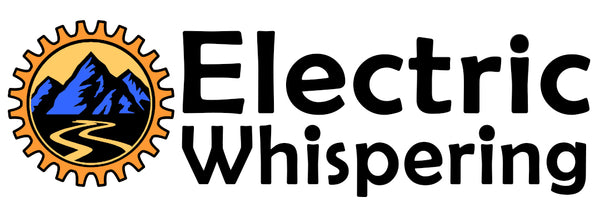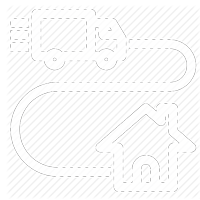|
USA - Federal Regulations state that a "Low Speed Electric Bicycle" is defined as "a two- or three-wheeled vehicle with fully operable pedals and an electric motor of less than 750 watts (1 h.p.), whose maximum speed on a paved level surface, when powered solely by such a motor while ridden by an operator who weighs 170 pounds, is less than 20 mph."
"For purposes of motor vehicle safety standards issued and enforced
pursuant to chapter 301 of title 49, United States Code, a low-speed electric bicycle (as defined in section 38(b) of the Consumer Product Safety Act) shall not be considered a motor vehicle as defined by section 30102(6) of title 49, United States Code. - Approved December 4, 2002."
The US2002 Federal Law stipulates that an electric bike will be classified as street legal if it has a top speed of less than 20 mph and a motor power below 750W. If yours falls within this range, it will not require registration or a license in most US states.
Electric scooters in the US are allowed on roads that lack bicycle lanes so long as they don’t exceed the speed limit of 25 mph. Unless you are passing or turning left, the scooter has to be ridden close to the curb on your right hand. Different US states have individual specifications when it comes to e-bikes or what are known as Personal Light Electric Vehicles (PLEVs).
H.R.727 - 107th Congress (2001-2002): To amend the Consumer Product Safety Act to provide that low-speed electric bicycles are consumer products subject to such Act.
Ref to link
|
The US FDA does not use the common description of a Mobility Scooter but states that the vehicles are Part 890 Physical Medicine Devices, Subpart D, Physical Medicine Prosthetic Devices. Section 890.3800 states that Motorized 3 Wheeled Vehicles. (a) Identification. A motorized three-wheeled vehicle is a gasoline-fueled or battery-powered device intended for medical purposes that is used for outside transportation by disabled persons.
The USA Department of Justice in September 15, 2010 issued the new rules for what is a Mobility Device by establishing that:
A) A wheelchair is no longer just a historic type wheelchair, but that "The term "wheelchair" is defined in the new rules as "a manually-operated or power-driven device designed primarily for use by an individual with a mobility disability for the main purpose of indoor or of both indoor and outdoor locomotion."
B) A new class of Mobility Device is recognized by the DOJ. "In recent years, some people with mobility disabilities have begun using less traditional mobility devices such as golf cars or Segways®. These devices are called "other power-driven mobility device" (OPDMD) in the rule. OPDMD is defined in the new rules as "any mobility device powered by batteries, fuel, or other engines… that is used by individuals with mobility disabilities for the purpose of locomotion, including golf cars, electronic personal assistance mobility devices… , or any mobility device designed to operate in areas without defined pedestrian routes, but that is not a wheelchair". |
|
You can operate a scooter with any class of driver’s license in California. This means that you don’t need a license specifically for scooters, but you do need to have a regular driver’s license. And while motorized scooters are street-legal, they don't need to be registered with the DMV or carry license plates.
While on the road, motorized scooter riders need to obey the same traffic and safety laws as all other vehicles. However, there are also some scooter-specific restrictions in California:
- The driver needs to wear a U.S. Department of Transportation-compliant helmet at all times.
- Scooters can’t be ridden on roads with a speed limit greater than 25 miles per hour, unless there is a bike lane, in which case the scooter can only be ridden within it.
- As with other vehicles, motorized scooters should not be operated on sidewalks.
- There cannot be a passenger on scooters, just the driver.
- Motorized scooters shouldn’t be driven faster than 15 miles per hour on the road.
These regulations apply to standard motorized scooters. Mobility scooters, on the other hand, can be driven at up to 30 miles per hour on the road. However, this law only applies to mobility scooters operated by seniors or those with a physical disability.
In summary, the new California law allows for:
• When riding an electric scooter or bike, a person can ride without a helmet if the person is at least 18 years old.
• Regardless of the street’s speed limit, the rider can ride on a class II bike path (lane marked for bikes with white lines) or class IV bike path (bike lane protected by physical barrier or raised pathway), but can’t go faster than 15 mph.
• Riding on streets with a speed limit of up to 25 mph, is legal in most cities, but the rider still can’t go faster that 15 mph.
• Riding on streets with a speed limit of up to 35 mph streets is possible, if the local authorities (county, city, township) passes an ordinance allowing it, but even then, the rider still can’t go faster than 15 mph. Ref to link
|
|
In what may be news to electric scooter riders who have been flooding Big Apple streets for months now, the devices will officially become legal Monday, under laws passed by the City Council months ago.
Electric bikes and scooters are finally legal in New York. The state’s tentative budget agreement for fiscal year 2020 includes language that authorizes pedal-assist bikes, throttle-powered bikes and electric scooters. This change has been years in the making, and proponents say it’s a win for delivery workers, who have been advocating for the use of e-bikes for nearly a decade.
The changes added to the budget agreement are similar to legislation that New York lawmakers voted on last summer. While that passed through the state Senate and Assembly with little opposition, Governor Cuomo vetoed the bill due to a lack of safety measures — it did not include helmet requirements. The new provisions require helmets for 16- and 17-year-olds who ride e-scooters or e-bikes and for anyone who rides an e-bike that maxes out at 25 mph.
The budget agreement creates three classes of e-bikes: pedal-assist bikes that max out at 20 miles per hours, throttle-powered bikes that max out at 20 mph and throttled-powered bikes that max out at 25 miles per hour in cities of one million people or more.
All classes, as well as e-scooters that max out at 15 miles per hour, are now legalized statewide. Though, municipalities can still apply additional regulations. For instance, scooter share programs are not permitted in Manhattan, so don’t expect to see Bird, Lime or Jump scooters there anytime soon. Ref to link
|




